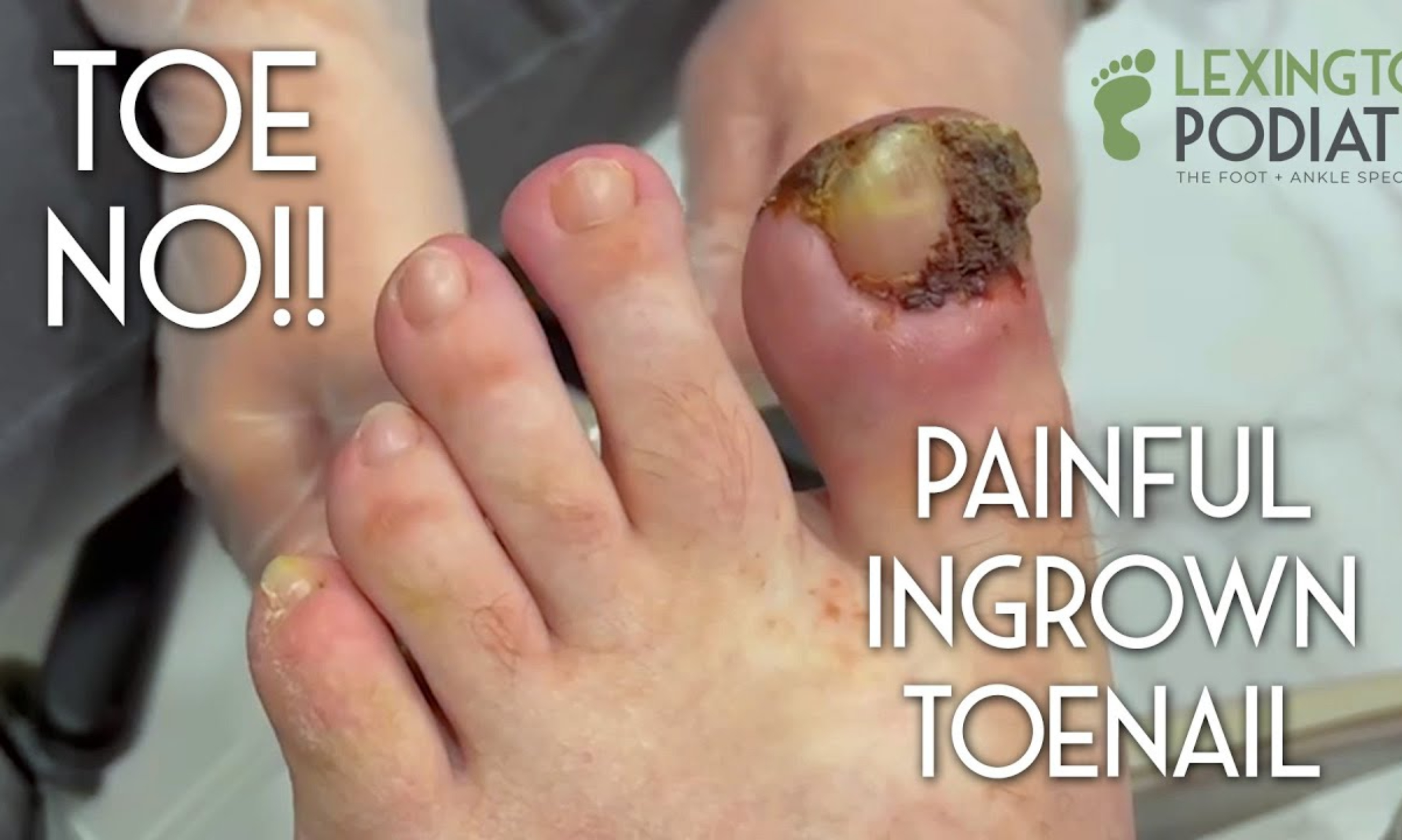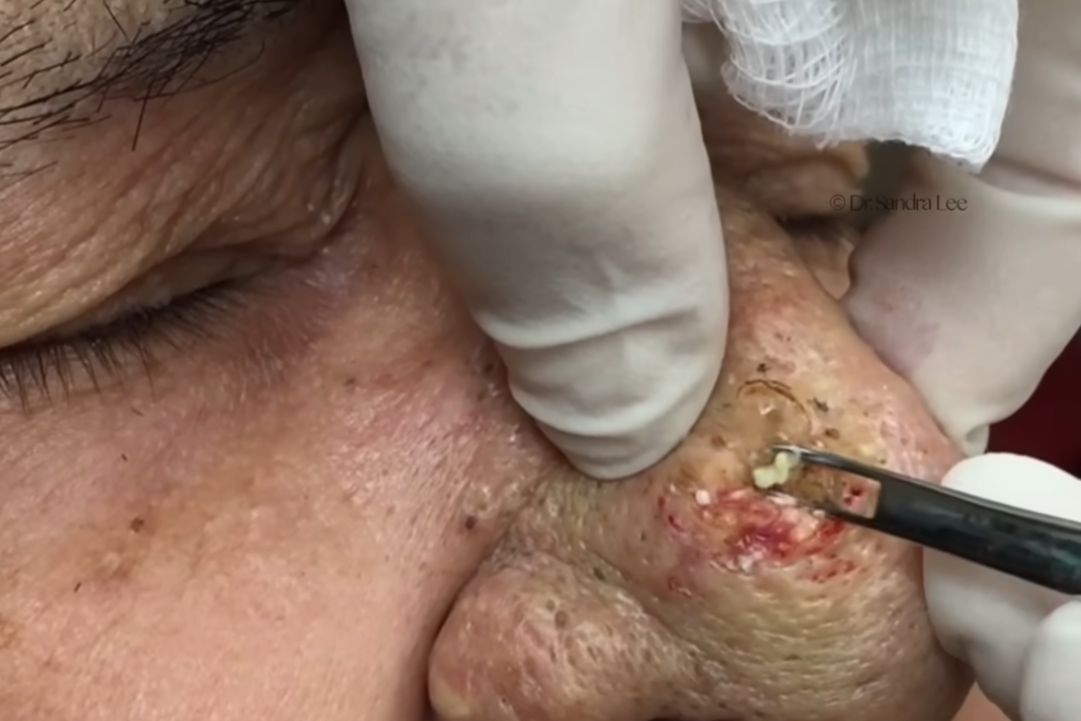https://www.youtube.com/watch?v=br1tfrOIYcc
From opening lids to digging in dirt, your fingernails are part of a lot of tasks. This makes the nails a common spot to find dirt, bacteria, lint, dead skin cells, and other unwanted material.
In a study of 20 college students, all 20 students had bacteria under their nails, including Staphylococcus and Pseudomonas.
Practicing excellent nail care and keeping the fingernails clean not only looks healthier, it can also help prevent the transmission of diseases. Even if you have hard-to-reach grime, here are some ways to clean underneath your fingernails and your toenails.
Soil, grease, and motor oil can all get stuck under your nails. Here are some tips for nails with dirt you can see.
- Wash your hands with dish soap. Use dish soaps to clean your hands and nails. These soaps are made to cut grease and are often effective in reducing grease and oil buildup under the nails.
- Use job-specific hand soap. Consider purchasing a cleaner specifically made to remove grease and dirt from the hands. Two top-reviewed products include Gojo Natural Orange Pumice Industrial Hand Cleaner and The Original Tough Nut Hand Cleaner.
- Use a washcloth. Use a soft washcloth to help get those hard-to-reach spots under your fingernails and around your cuticles. Always clean your washcloth after every use.
- Run lukewarm water. Use lukewarm — not cold or hot — water. Lukewarm water is less drying to the hands and nails than very hot water.
- Use an orange stick. Also called a cuticle stick, these angled, pointed wooden sticks are one way to manually remove dirt under your nails.
Always follow your cleaning efforts with some lotion on the nails and hands to prevent overdrying. Petroleum jelly is a common household product that can help keep nails healthy.
Daily nail care can add up to healthy, clean fingernails. Outside of the times you have dirty fingernails, here are some tips for daily care:
- Keep your nails short. Evenly trimmed, short nails are less likely to collect bacteria and dirt. Check your nails every morning or evening after a shower, when they’re easier to cut. Ensure they’re all a short, manageable length. Never share your fingernail clippers to reduce infection risks.
- Get soap and water under your nails when you wash. Always pay attention to your nails when you wash your hands. In a study of four hand hygiene methods among dental assistants, hand-washing with antibacterial soaps and using an alcohol-based hand sanitizer were both effective in reducing bacteria on the fingertips. Whatever cleaning method you use, don’t forget your fingertips and nails.
- Dry your hands thoroughly. This minimizes the likelihood a nail infection will occur and prevents water from softening the nails too much.
- Moisturize. Apply a moisturizer to hands, nails, and cuticles. This will keep your nails flexible and healthy.
If you get a hangnail, trim it as quickly and evenly as possible. Don’t attempt to use your teeth as nail clippers — they’ll only injure your teeth and introduce bacteria in your nails.
Nail brushes are small, handheld brushes that closely resemble a toothbrush for the fingernails. Some people use them to get those hard-to-reach areas under the nails while they’re washing their hands.
While some people may feel that nail brushes help to get their nails super clean, a study published in the Journal of Hospital Infection didn’t find any differences among people who used nail brushes and nail picks and those who didn’t when washing their hands.
The researchers did conduct the study on those performing surgical scrubs. Therefore, it’s possible that people with visibly soiled hands may reap some benefits from using a nail brush.
If you do use a nail brush, it’s important that you wash the brush and allow it to air-dry as well. This can prevent the brush from accumulating bacteria and doing more harm than good.
If you work with your hands or are in a profession where you expose your nails to frequent hand-washing, your nails are at increased risk for becoming brittle. Some of the ways to keep your nails strong include:
- Use a nail strengthener. Apply a protective top coat to the nails at least once per week. Some nail polishes, including clear ones, contain nylon fibers that can confer strength to the nails.
- Up vitamins in your foods. You might also consider taking biotin supplements, which may help to strengthen nails. The American Osteopathic College of Dermatology recommends taking a biotin ultra-supplement that comes in 1 milligram capsules. Taking two or three daily for six months can help to strengthen the nails, but don’t take if you’re pregnant.
- Reduce how often you use harsh nail treatments. Limit your use of gel and acrylic nails as well as acetone nail polish removers. These strip the top layers of the nails, weakening them. If you do use these, try giving your nails a break before re-applications. It can take nails days and weeks to fully recover their thickness or surface.
- Wear work gloves. Wear cotton-lined rubber gloves whenever possible to perform household tasks or your daily activities. These can protect your hands from further damage.
Applying moisturizer after drying the nails can also help to seal in moisture. Look for products that contain lanolin to apply to the nails. Oils are also water-repellant yet moisturizing. Examples include almond, vitamin E, and coconut oils
Depending on your flexibility level, toenails can be considerably harder to reach and keep clean than your fingernail counterparts. Some of the daily tips you can try to keep your toenails clean include:
- Wash and scrub your feet. Clean and dry your toes on a daily basis. Wash them with soap and water. You can use a loofah, sponge, or washcloth to really clean around the toenails.
- Try a foot soak. If you don’t take a shower every day, consider soaking your feet in a tub of lukewarm water and soap. This can help break up or dislodge dirt underneath toenails. Rinse and dry your feet thoroughly afterward.
- Trim your toenails after a bath or foot soak. This is when they’re softer and easier to trim. If you have chronic foot problems, it may be better to get your toenails trimmed at a podiatrist’s office.
- Carefully dry your feet and toenails. If it’s difficult for you to reach your feet, try putting a towel on the ground and bunching it up with your toes to dry between your toes.
- Apply lotion or moisturizer to your feet and toenails. Allow foot lotion to dry or soak in thoroughly before putting socks back on.
Inspect your toes regularly for signs of fungus, such as flaking nails, or infections, such as red, swollen, and irritated nail areas. If you have a hard time seeing the bottoms of your feet, place a mirror on the floor and hold your foot over the mirror.
Regular nail and foot care can help you keep your nails clean, healthy, and presentable. If you see something unusual, such as nail discoloration, redness, or swelling, talk to your doctor or healthcare provider. These symptoms could indicate an underlying nail problem.
https://youtu.be/jNiL9c5OLhI?si=zt-ji1VXpYkM-ivi
How to Cut Toenails
Clip straight across the nail and use clean clipping tools. You may need to take special care if you have thick toenails or toe fungus. Cutting your toenails incorrectly can lead to ingrown toenails, cut skin, or the spread of fungus.
Cutting your toenails properly is an important step in preventing painful ingrown toenails — a condition when nails curve and grow into the skin, which often leads to pain and sometimes to infection.
There are six main components or steps to cutting your toenails properly.
1. Nail clippers
The first step is to use the proper nail-cutting tool. Nail clippers or manicure scissors are appropriate. Avoid tools such as regular scissors or knives that aren’t specifically designed for cutting nails.
You should have two nail clippers — one for your fingers and one for your toes. Since your toenails are broader and thicker, they require a larger clipper. Also, by having separate clippers, you reduce the chance of transferring bacteria or fungus between your feet and hands. Make sure to clean your clippers thoroughly between each use.
2. Cut frequency
The second step is the frequency of cutting. Most people’s toenails grow about 2 millimeters (0.08 inches) a month, so it’s appropriate to cut them every six to eight weeks. That being said, if you are a very active person or an athlete — especially a runner — you will probably be more comfortable if you trim them more often.
3. Cutting wet or dry nails
The third step is answering a common question: “Should I cut my nails before or after I shower?” In most cases, the answer is “before.” Dry toenails are less likely to bend or tear when you cut them, so you will get a cleaner cut.
For people with very thick toenails, cutting will be easier after a shower.
4. Time between cuts
The fourth step is determining how long to leave your toenails following the cut. This is important, because cutting your toenails too short could heighten your risk for ingrown toenails. If you leave your toenails too long, they are more likely to get caught on something and tear.
It’s recommended that you maintain your toenails at a length of about 1 to 2 millimeters (0.04 to 0.08 inches).
5. Cutting the nail
The fifth step is the actual cut. To avoid painful ingrown toenails, cut your toenails straight across. For many people, this is easiest to do in two cuts — the first one with the clippers slightly off the side of the nail to create a straight edge; the second to remove the rest of the nail following the line of the straight cut.
6. Filing the nail
The sixth and final step is to file your nails with an emery board to smooth any jagged edges that could snag and potentially tear the nail as it grows.
Your toenails might be thick for any of a number of reasons, including:
- fungal infection, such as onychomycosis
- psoriasis, a skin condition that causes rapid cell build up on the skin’s surface
- injury
- tight-fitting shoes
To properly cut your thick toenails, follow these steps:
- Soak your feet in warm water for at least 10 minutes to soften your nails, and then use a towel to thoroughly dry your feet and toenails.
- Using a nail clipper, make small cuts to avoid splintering the nail and cut straight across. To lessen the chance of the nail becoming ingrown, don’t round off the corners.
- Use an emery board to smooth edges and corners that could snag.
If your thickened toenails are painful or you don’t think that you can safely cut your toenails without help, ask your doctor for advice.
https://youtu.be/mMpl1n0b0oE?si=X3PNkMfBKqYODXq4



